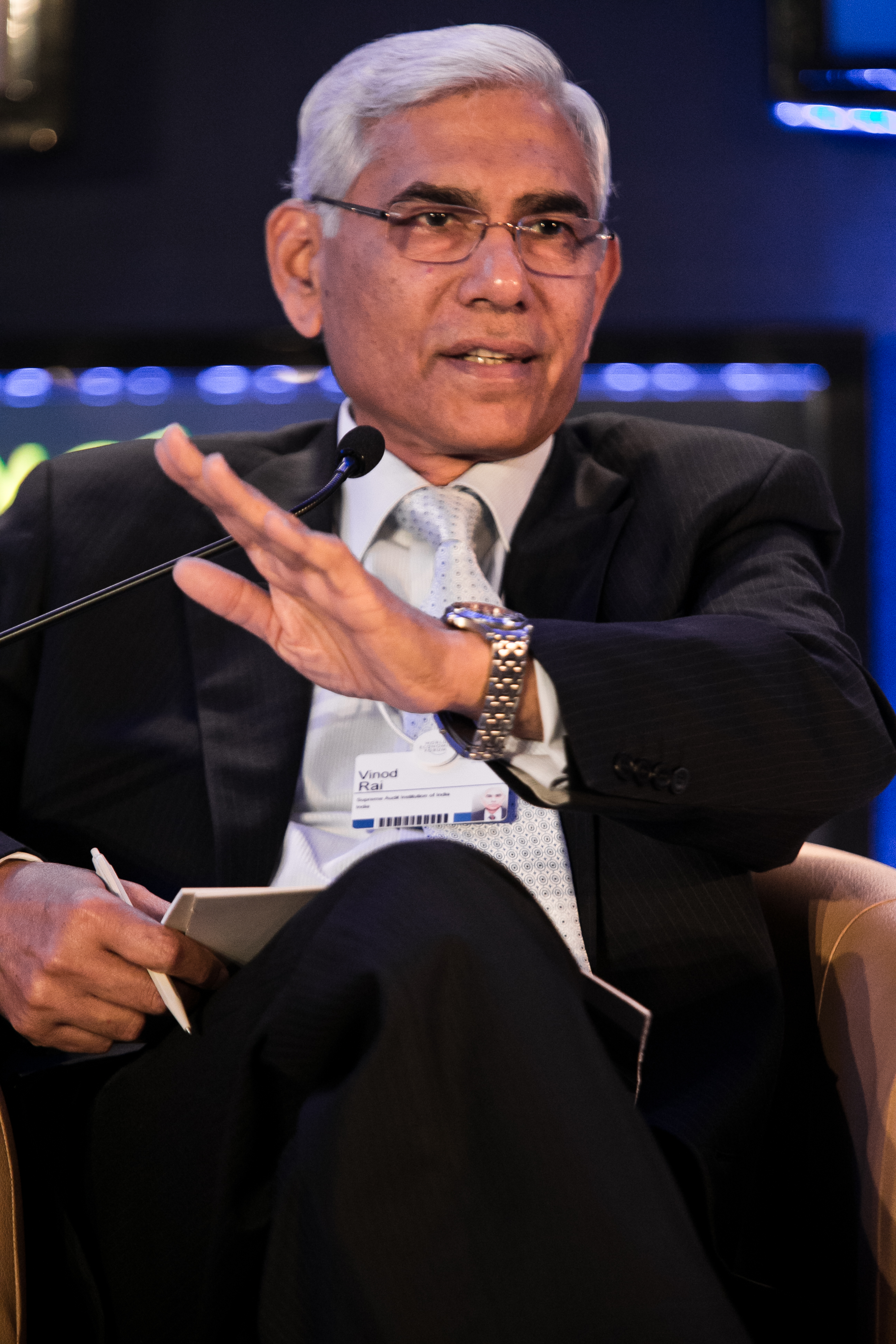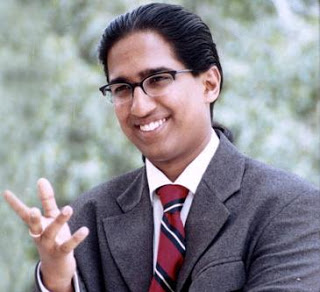Vivek Kaul
In a blog on The Economic Times website TK Arun writes that “Former CAG[Comptroller and Auditor General] Vinod Rai does a far better job of drumming up publicity for his book than he did of auditing the government’s accounts.”
This is a very serious charge and needs to explored in detail. Arun further writes that “The New Telecom Policy identified, in 1999, the goal as maximizing the spread of telecom, so as to accelerate the pace of social and economic development.” True.
But there are certain details that one needs to look into. The National Telecom Policy of 1999 had set a teledensity target of providing 15 telephone connections per 100 of population. The teledensity in 2001 had stood at 3.58. In September 2007, a teledensity of 18.22 had been reached.
It was only in September 2007 that the shenanigans of the then communications minister A Raja started. In a press release put out by on September 25, 2007, applications were invited for telecom licenses. The last date was set to October 1, 2007, a week later. In total 575 applications for 22 service areas were received by the communications ministry.
There wasn’t enough telecom spectrum available to allocate to so many applicants. So what was the way out? In fact, the tenth plan document clearly mentions this, when it comes to spectrum allocation: “pricing needs to be based on relative demand and supply over space and time in a dynamic manner, [with] opportunity cost to reflect relative scarcity of the resource in a given situation.”
So yes, the goal of the National Telecom Policy of 1999 was to maximize the spread of telecom, but there were other factors to consider as well. Interestingly, Manmohan Singh wrote a letter to A Raja on November 2, 2007. In this letter Singh said “In order that spectrum use efficiently gets directly linked with the correct pricing of spectrum, consider (i) introduction of a transparent methodology of auction, wherever legally and technically feasible, and (ii) revision of entry fee, which is currently benchmarked on old spectrum auction figures.”
The telecom licenses were to be given away by following the first-come-first-served process, with an entry fee being charged. An entry fee of Rs 1,651 crore, set in 2001 was being charged. The Indian telecom sector had totally changed in the meanwhile. As mentioned earlier the teledensity in 2007 was at 18.22 per 100 of population, having exploded from 2001 onward when it was at 3.58.
Taking these factors into account, the telecom regulator TRAI had also pointed out in August 2007 that “In today’s dynamism and unprecedented growth of telecom sector, the entry fee determined in 2001 is also not the realistic price of obtaining a license. Perhaps it needs to be reassessed by a market mechanism.”
As Rai points out in his book Not Just An Accountant—The Diary of the Nation’s Conscience Keeper: “It is obviously no one’s case that we need to sit back once a target is achieved, but surely revenue mobilization, in lieu of a scarce national resource being made available for private commercial exploitation where tariff is not fixed, cannot be totally overlooked.” If nothing else, at least the rate of inflation had to be taken into account while charging an entry fee.
The National Telecom Policy of 1999 aimed at maximizing teledensity, nevertheless there were certain ifs and buts built into it. As Manmohan Singh pointed out to Raja in the letter cited earlier: “The DoT [department of telecom] has received a large number of applications for new licenses in various telecom circles. Since spectrum is very limited, even in the next several years all these new licensees may never be able to get spectrum. The Telecom Policy that had been approved by the Union Cabinet in 1999 specifically stated that new licenses would be given subject to availability of spectrum.”
So, it wasn’t just about maximizing the spread of telecom, as Arun wants us to believe. Other practical issues needed to be considered as well.
Arun further goes on to write “As for Rai’s criticism of Manmohan Singh, it would be fair to ask: has he estimated the cost that would have been inflicted on the nation by the political turmoil and uncertainty caused by the then-PM refusing to yield to coalition compulsions?”
This argument doesn’t make any sense to me. It has been well established by now that Manmohan Singh was aware of what Raja was up to, but chose not to do anything about it, after writing a couple of letters to Raja. Singh responded on November 21, 2007, by sending what former CAG Rai calls a “template response”. In this letter Singh acknowledged that he had received Raja’s recent letter on the recent developments in the telecom sector. Raja wrote to the prime minister again on December 26, 2007. Singh again responded with the same templated response on January 3,2008.
Raja had dismissed Singh’s suggestion of considering an auction. And Singh had not done anything about it. In fact, he went on to distance himself from the decisions being made by Raja. Joint secretary Vini Mahajan recorded that the prime minister “does not want a formal communication and wants PMO to be at arm’s length.” As Rai asks “How can the office of the prime minister distance itself from such major decisions? Arm’s length from the action of his own government?”
The straightforward answer here that Singh was just trying to run a coalition government. But as Rai put it in a recent interview to Outlook “Does good politics mean just staying in power? Integrity is not just financial; it is intellectual integrity; it is professional integrity. You have an oath of allegiance to the constitution and that is important.”
Hence, what is clear here is that Singh was more interested in continuing to be PM rather than making what he thought was the right decision.
Arun further writes ” In estimating a notional loss to the exchequer of Rs 1,76,000 crore from not holding auctions to allocate 2G spectrum, Rai erred on multiple counts.”
The CAG report on the 2G scam had four computations of the loss to the country. These numbers were Rs 67,364 crore, Rs 1,76,645 crore, Rs 69,626 crore and Rs 57,666 crore. The CAG did not put out only one estimate. The media of which Arun is a part of picked up the highest number and splashed it all over. That was clearly not Rai’s fault.
On February 2, 2012, the Supreme Court cancelled all the licenses that had been issued by A Raja. These licenses had to be auctioned again. The two rounds of auctions that happened netted the government Rs 78,505 crore. This number is more than the three out of the four options of losses that the CAG calculated.
As T N Ninan wrote in the Business Standard “As it happens, the CAG has more than one figure of revenue loss. Several commentators have also come up with numbers, which run into tens of thousands of crores. And because of the aberrant manner in which Mr Raja handed out these substantial gifts, it became the largest scam in our history.”
Arun further writes “[Rai] failed to take into account the additional revenues the government earned from allocating spectrum in the manner in which it did, instead of holding auctions.”
This is a basically using the end to justify the means and in the process advocating crony capitalism as well. When the press release inviting applications for telecom licenses was put out, the potential applicants were asked to apply between September 25, 2007 and October 1,2007. In a letter written to Manmohan Singh on November 2, 2007, Raja had informed him that he had decided to advance the cut off date for licenses to September 25,2007, the date on which the press release was issued for the allocation of licenses, instead of October 1, 2007.
Raja did not offer any reasons for the same. Singh did not ask. What is interesting nonetheless is that thirteen applicants seemed to have known of this change in date, in advance. How else do you explain the fact that certain applicants appeared with demand drafts amounting to thousands of crore, which had been issued even before the press release inviting applications for telecom licenses was put out on September 25, 2007.
Given these reasons, I guess its time that certain sections of the media stop portraying Rai as the villain of the piece. The real villains were the politicians starting with Manmohan Singh who let A Raja to carry out the 2G scam. As Rai writes “The MPs tore into the CAG’s findings. Congress MPs walked up to me…and said ‘We have to ensure that the prime minister’s name does not get dragged into this,’ adding, ‘What you people presented appears so reasonable, but what do we do?’ Such are the ways of parliamentary democracy practised by some.”
To conclude, as far as Rai drumming up publicity for his book is concerned, what is wrong with that? It’s a book that needs to be read by every thinking Indian who wants to “really” understand how the politicians of UPA took India for a ride, over a period of ten years.
The article originally appeared on www.FirstBiz.com on Sep 19,2014
(Vivek Kaul is the author of the Easy Money trilogy. He tweets @kaul_vivek)

